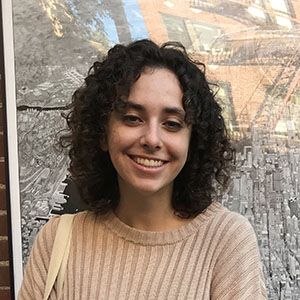When It All Falls Down
Toya Wolfe’s debut novel depicts girlhood friendship in a doomed housing project
Toya Wolfe pens a tribute to the public housing project where she grew up in her outstanding debut, Last Summer on State Street. Through the eyes of 12-year-old Fe Fe, we bear witness to the realities of Chicago’s infamous Robert Taylor Homes in this heartfelt coming-of-age novel.
 Completed in the 1960s, the Robert Taylor Homes consisted of 28 identical high-rise buildings that stretched two miles through the neighborhood of Bronzeville. The buildings were meant to provide affordable housing to the mostly Black communities on the city’s South Side. Ultimately considered a public housing failure due to underfunding, racist policies and policing, and the perpetuation of crime, the Robert Taylor Homes were demolished by the Chicago Housing Authority (CHA), with the last of the buildings coming down in 2007.
Completed in the 1960s, the Robert Taylor Homes consisted of 28 identical high-rise buildings that stretched two miles through the neighborhood of Bronzeville. The buildings were meant to provide affordable housing to the mostly Black communities on the city’s South Side. Ultimately considered a public housing failure due to underfunding, racist policies and policing, and the perpetuation of crime, the Robert Taylor Homes were demolished by the Chicago Housing Authority (CHA), with the last of the buildings coming down in 2007.
Wolfe’s novel opens in the summer of 1999. School is out, and the Robert Taylor Homes are being picked off one by one, as Fe Fe and her neighbors watch the wrecking ball destroy adjacent buildings. “This is how my block turned into a ghost town,” Fe Fe remembers. She wonders about life after the projects, waiting in hopes that her family will receive a CHA relocation voucher and dreading the possibility of being cast out with no support.
Fe Fe is a smart, plucky narrator with a kind soul and street smarts — it’s impossible not to root for her. She and her friends Precious and Stacia spend the summer running around their building “in this tight formation, snapping through the block in neon colors like a school of tropical fish.” Fe Fe invites Tonya — a mysterious, quiet new neighbor whose building is one of the first to be demolished — into their little crew. Together, they all play Double Dutch, crush on boys, and buy candy. Typical tween activities.
 Life doesn’t stay peachy for long. Tensions arise between the girls as uncontrollable forces like police brutality, sexual abuse, addiction, and gang violence alter their lives, their families, and their friendships forever. By the end of the book, the group mostly disbands. Fe Fe uses Double Dutch references to animate their breakdown: “That summer, one by one, they dropped out of sight as if we were in a game of All in Together.”
Life doesn’t stay peachy for long. Tensions arise between the girls as uncontrollable forces like police brutality, sexual abuse, addiction, and gang violence alter their lives, their families, and their friendships forever. By the end of the book, the group mostly disbands. Fe Fe uses Double Dutch references to animate their breakdown: “That summer, one by one, they dropped out of sight as if we were in a game of All in Together.”
Wolfe builds suspense through her use of backward-glancing commentary peppered throughout the narrative. When Fe Fe meets Tonya’s mother, Rochelle, who is addicted to crack, a future version of Fe Fe offers perspective: “I couldn’t imagine how miserable Tonya’s life had to be with Rochelle for a mother. I’d find out though.” This use of foreshadowing truly engrossed me. Throughout Last Summer, I found myself tripping over sentences in anguish and anticipation for what was coming next for the girls. This device often made me ask where the story was going and how much we’d get to know. Who is the Fe Fe speaking to the reader in these moments of reflection, and what happens to her, Tonya, Precious, and Stacia?
The harsh realities of life in the projects deny Fe Fe and her friends the innocence of childhood. We see this in the way the encroaching demolition robs them of a sense of security and a feeling of home. Fe Fe knows this racially motivated, deeply embedded marginalization all too well: “Maybe the worst part about growing up in public housing is that people think your body is public too. That even before you are born, your Black body already belongs to the owners of the land.”
What makes Fe Fe such a remarkable narrator is her self-awareness and resilience as she acquires more knowledge about her current reality. She hears from a gang leader that the homes are coming down because “white people wanted to be closer to their jobs.” Her favorite teacher says to her class, “If you want to be in a position where the government can’t uproot your life so easily, get an education and you’ll have more control over your situation.” As she learns about systems of oppression and starts to define her own path, she begins taking back power in spite of dire circumstances.
Last Summer on State Street certainly includes moments of joy. A deep sense of community within the Robert Taylor Homes reverberates throughout Fe Fe’s narration. Her friends and family build her up and help her grow, challenging the culturally held assumption that life in any housing project is stunting or hopeless.
Wolfe’s incisive novel is a gift to the Chicago literary canon. She’s the guardian of the legacy of the Robert Taylor Homes, remembering what is physically gone through these characters who reflect the complexities of life in public housing.

Jacqueline Zeisloft is a writer and editor whose work has appeared in Nashville Scene and Women’s Review of Books. She holds a B.A. in English literature from Belmont University. She lives in Brooklyn, New York.


